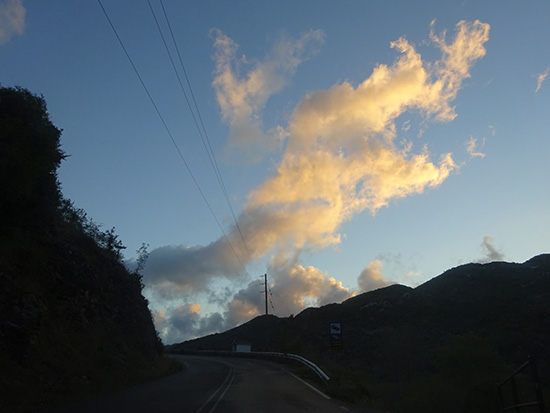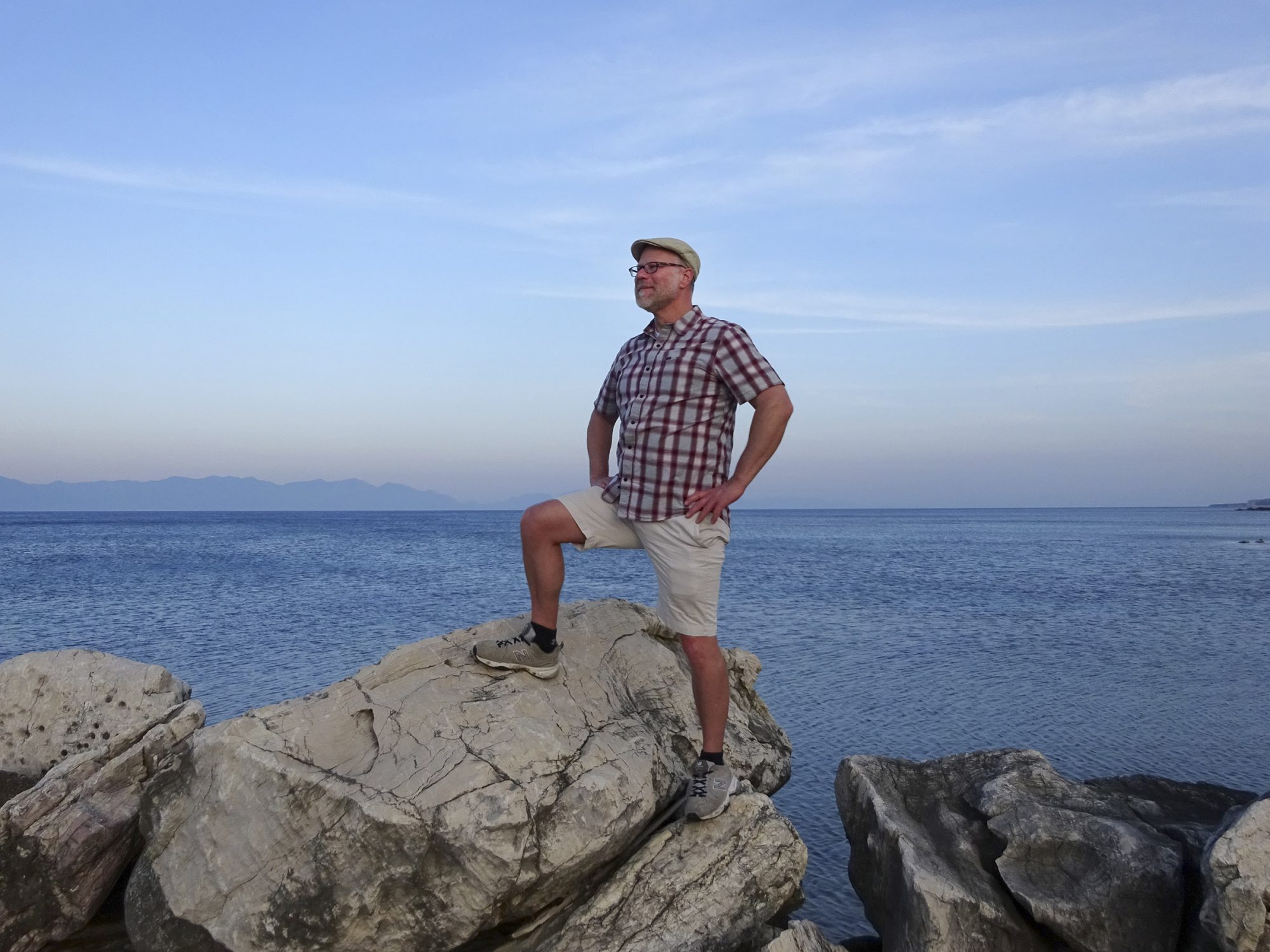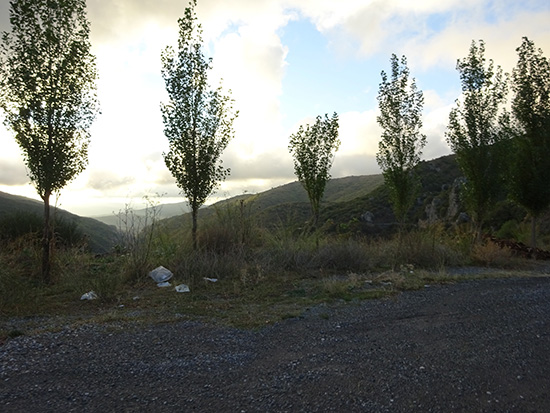
I’ve been back in San Francisco a little over a week now, walking the dogs, meeting a few new dating prospects, getting caught up with my work, listening to Lana del Rey’s depressing new album and Rodriguez’s sublime Cold Fact from 1970, but my thoughts return to my final days last week in Greece, traveling through Elis and Arcadia. I believed myself very near heaven during those languid days in [Dimitsana]…
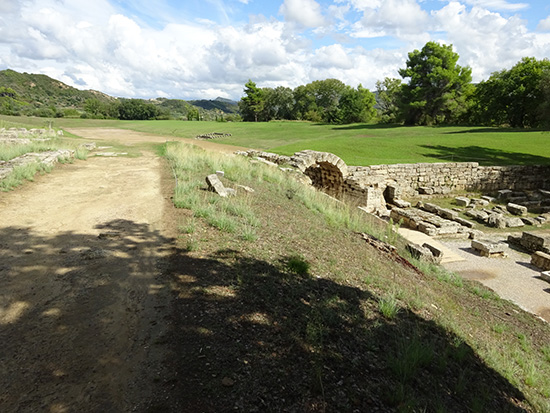
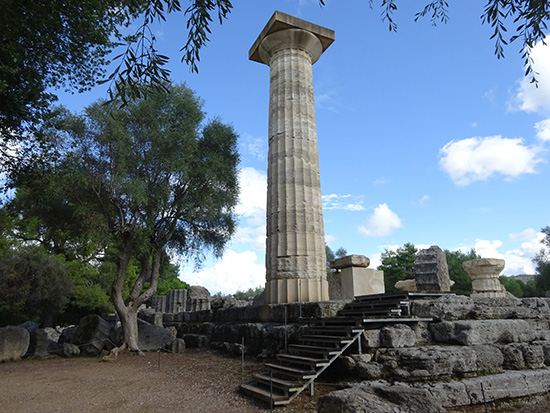
Our trip began in Olympia, where the original Olympic games were held every 4 years from the 8th century BC to the 4th AD. In the Temple of Zeus was a 43 foot tall statue of the seated god, made of ivory plates and gold panels over a wooden framework, the work of the sculptor Phidias, who also designed the 40 foot statue of Athena in the Parthenon. His statue of Zeus, one of the Seven Wonders of the Ancient World, vanished completely in the 5th century, now in some Bond villain’s subterranean retreat somewhere.
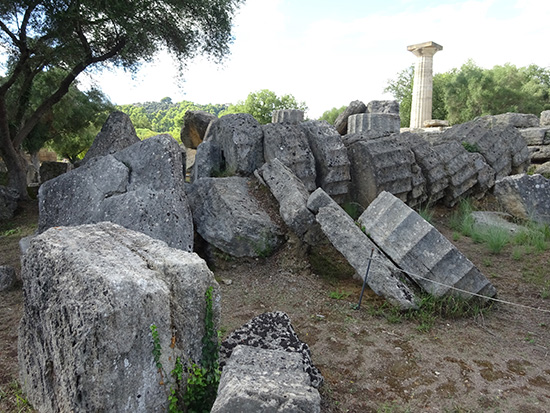
Olympia itself completely disappeared for about 1,000 years. After a series of earthquakes, Theodosius II enforced a ban on pagan festivals and destroyed the temple. Then came plague, more earthquakes, floods and tsunamis, so that by the 7th century the entire site was abandoned and eventually completely buried.
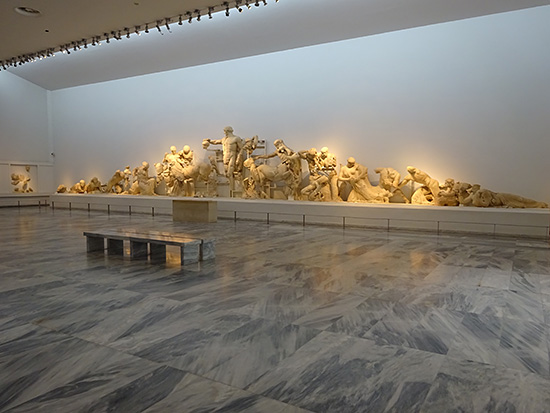
The artifacts on display in the Olympia Archaeological Museum form one of the world’s greatest collections of art from antiquity. The friezes from the two pediments of the Temple of Zeus, created during the first half of the 5th century BC, are displayed in the central gallery, facing each other across the vast room, and surrounded by metopes depicting the labors of Hercules, as well as lion-headed water spouts from the temple.
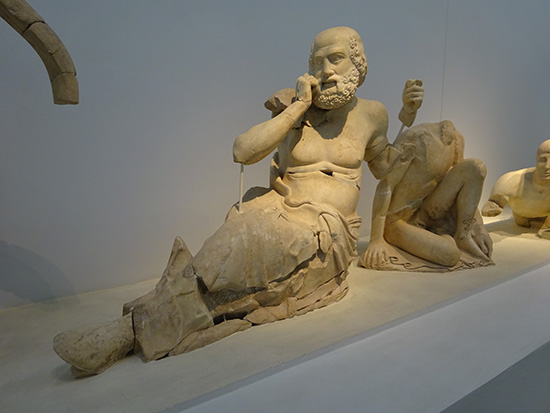
The eastern pediment depicts the chariot race between Pelops and Oinomaos. Pelops, after whom the Peloponnese is named, and the mythical founder of the Olympic games, wanted to marry the daughter of King Oinomaos, but to win her hand he had to beat his future father-in-law in a chariot race. Oinomaos had killed the previous 18 suitors after defeating them, fearful of a prophecy that he would be killed by his son-in-law. Pelops went to the sea and appealed to his former lover, Poseidon, reminding him of “Aphrodite’s sweet gifts” that they once shared, so Poseidon gave him a chariot drawn by winged horses. After winning the race–and of course, as prophesied, Oinomaos was thrown from his chariot and dragged to death by his horses–Pelops staged chariot races to thank the gods and as funeral races in honor of his slain father-in-law. From these games the Olympics were born.
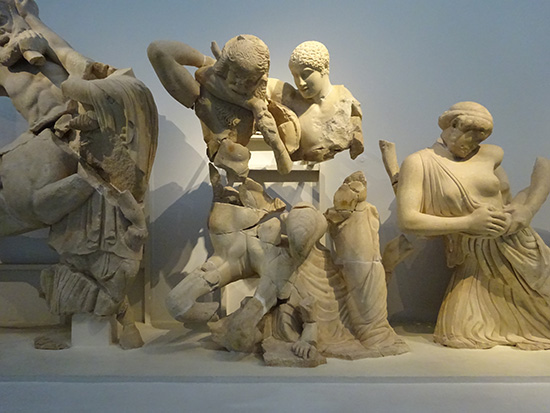
The frieze from the western pediment lively illustrates the abduction of the Lapith women by Centaurs at the wedding at Pirithous and Hippodamia, hooves and arms and legs and breasts entwined in a tour de force of sculptural narrative. The centaurs were invited to the wedding, but not used to wine, tried to rape the bride and carry off all the women and boys. The battle between the Lapiths and Centaurs is referred to many times in Greek art, metaphorically referring to the conflicts between Greeks and barbarians, or wild nature in conflict with civilized behavior.
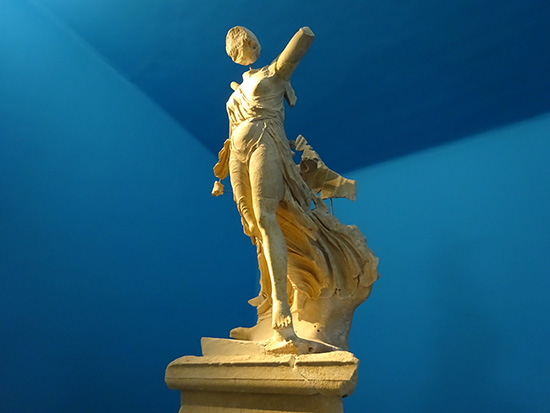
Viewed from the large central room is the Nike of Paeonius, from 420 BC, dramatically installed in a room of blue walls, the blue of heaven, the Nike descending triumphantly from Mount Olympus.
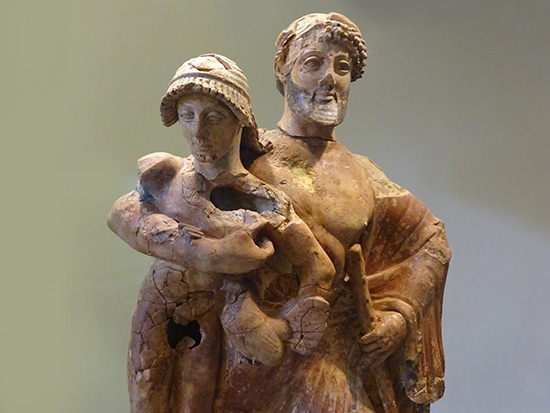
Nearby is a delightful terra-cotta sculpture of Zeus carrying off the young Ganymede, from about 480 BC. Zeus strides confidently forward, a satisfied smile on his face, little Ganymede tucked under his arms holding a hen, a common gift at the time associated with pederasty. Actually, Ganymede’s arm sort of disappears behind the hen down into the front of Zeus’ tunic, perhaps the source of Zeus’ bemusement.
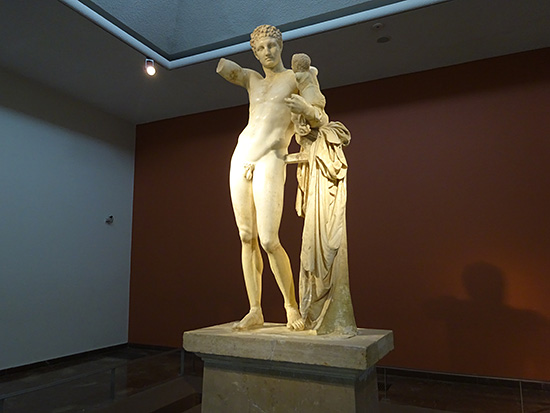
And then you turn the corner and there’s Hermes in all his polished contrapposto exquisiteness, the infant Dionysos perched on one of his arms, reaching playfully for a missing cluster of grapes dangling from Hermes’ missing other hand. My lips trembled and a single tear rolled down my cheek. The museum attributes the work to Praxiteles, created around the mid 4th century BC. The attribution is based on a remark by Pausanias two centuries later, but it was found exactly where he described seeing it, and the museum accepts it as the only original extant work by the master sculptor.
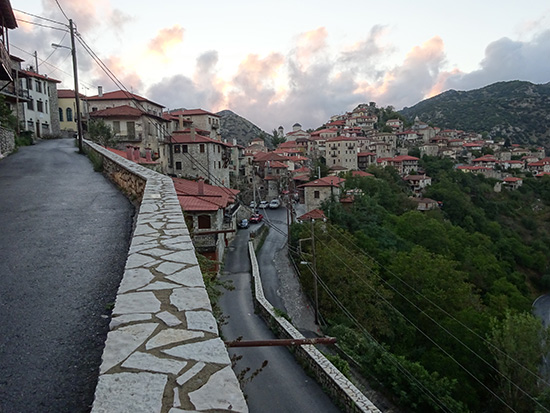
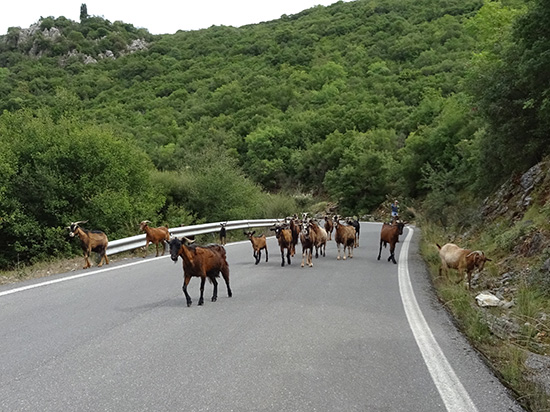
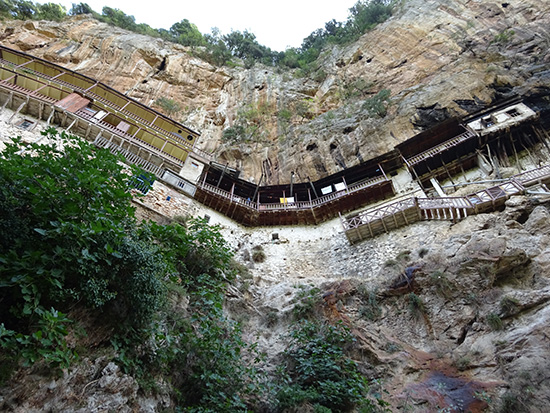
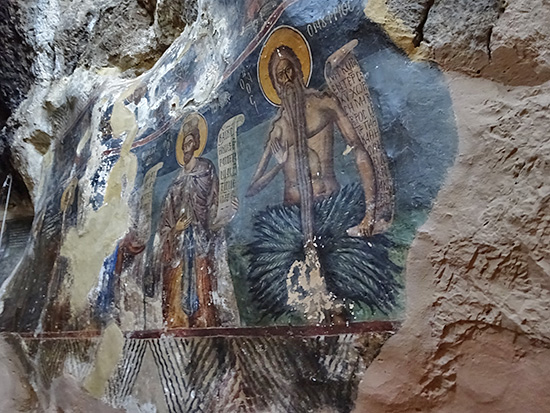
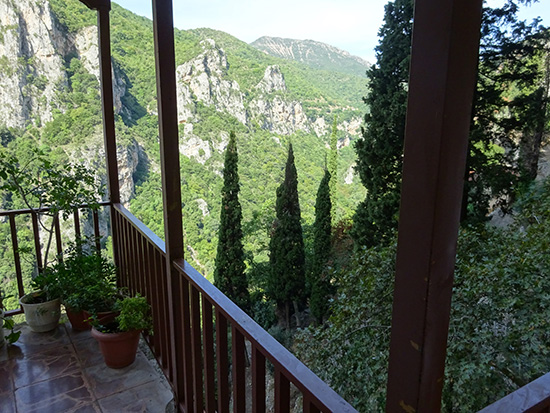
That night, after driving through scenic little village after scenic little village, we stayed in Dimitsana, a scenic little village of stone built on the side of a mountain overlooking the plain of Megalopolis. The next day we visited the Monastery of Agios Ioannis Podromos, dangling precipitously from cliffs, then on to the paltry ruins of ancient Gortys, the Byzantine bridge at Karytaina, and finally the Temple of Epicurean Zeus.
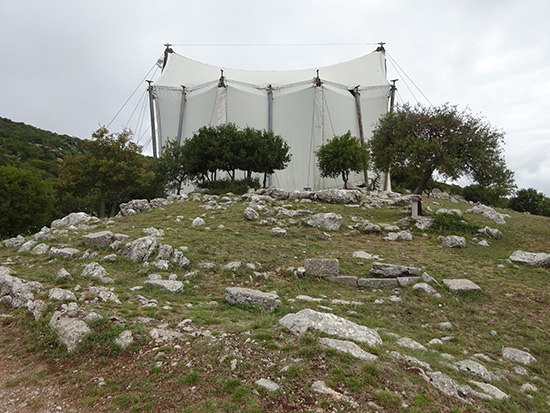
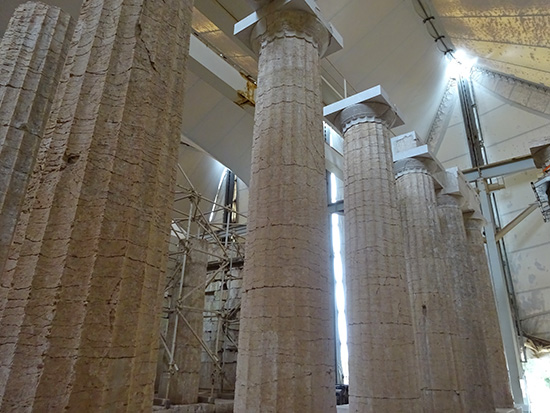
The temple was built about 450-400 BC, set atop Mt. Kotylion at 1,130 meters and has been under a big white tent for the past few decades while being restored. It was designed by Iktinos, the architect of the Parthenon, and contains examples of all three of the classical orders used in ancient Greek architecture: Doric, Ionic, and Corinthian. The single Corinthian column at the far end of the naos is believed to be the first use of the Corinthian order. The massive limestone columns of the temple feel both heavy and light, porous, as if they’re about to crumble at any minute. The exterior was minimally decorated, but the interior had a continuous frieze depicting Greeks in battle with Amazons, and Lapiths trying to save their women from those Centaurs again. The frieze metopes were removed by the British in 1815 and are now in the British Museum, displayed near the other Greek cultural treasures plundered by the British in the tumultuous years of Ottoman rule.
And so my summer closes, suddenly single again, but ready for love, adventure and my impending fifties, due to arrive next month.
